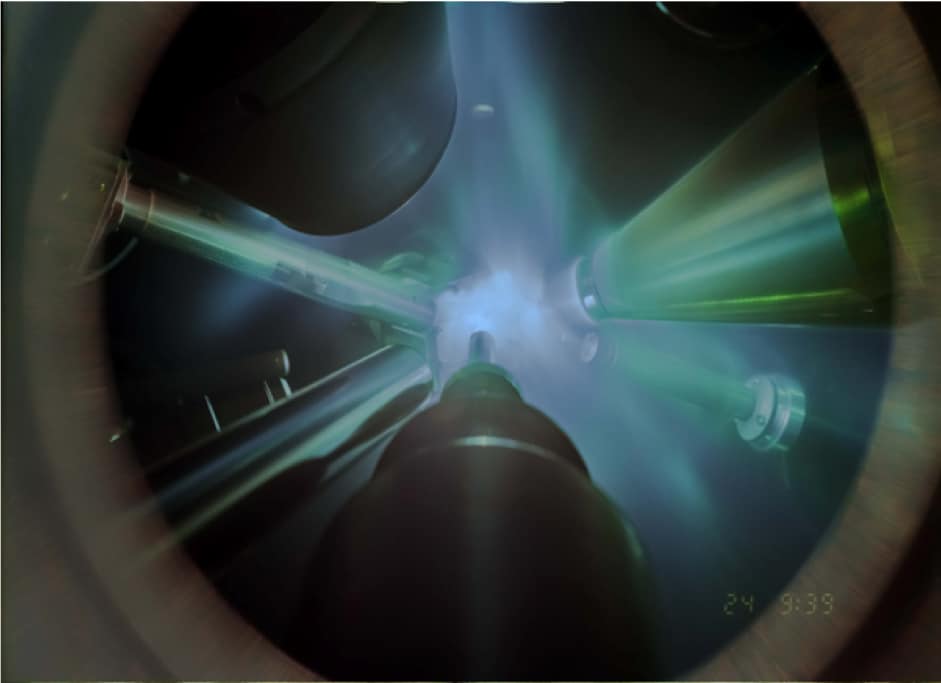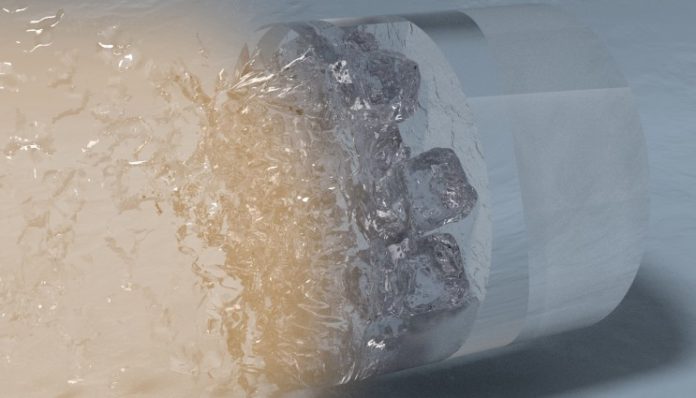Using giant lasers, scientists at the Lawrence Livermore National Laboratory (LLNL) produced a wild new kind of ice that is expected to exist inside the Uranus. This is for the first time, scientists have flash frozen the water into its exotic superionic phase and recorded X-ray diffraction patterns with the aim of identifying its atomic structure for the very first time.
Scientists first predicted the existence of superionic ice in 1988, and first observed evidence of its existence in 2018. New methods have allowed scientists to actually observe its atomic structure.
Now, the LLNL scientists describe new results. Scientists used laser-driven shock waves and in-situ diffraction and observed the nucleation of a crystalline lattice of oxygen in a few billionths of a second.
The outcomes also provide detailed information about the interior structure of ice giant planets.
LLNL physicist Federica Coppari, co-lead author of the paper said, “We wanted to determine the atomic structure of superionic water. But given the extreme conditions at which this elusive state of matter is predicted to be stable, compressing water to such pressures and temperatures and simultaneously taking snapshots of the atomic structure was an extremely difficult task, which required an innovative experimental design.”
During experiments, scientists used six giant laser beams to generate a sequence of shockwaves of progressively increasing intensity to compress a thin layer of initially liquid water to extreme pressures (100-400 gigapascals (GPa), or 1-4 million times Earth’s atmospheric pressure) and temperatures (3,000-5,000 degrees Fahrenheit).

Next, while documenting the crystallization and identifying the atomic structure, scientists exploded a tiny iron foil with 16 additional laser pulses and created a hot plasma. Doing this successfully generated a flash of X-rays precisely timed to illuminate the compressed water sample once brought into the predicted stability domain of superionic ice.
Coppari said, “The X-ray diffraction patterns we measured are an unambiguous signature for dense ice crystals forming during the ultrafast shockwave compression demonstrating that nucleation of solid ice from liquid water is fast enough to be observed in the nanosecond timescale of the experiment.”
LLNL physicist and co-lead author Marius Millot said, “We designed the experiments to compress the water so that it would freeze into solid ice, but it was not certain that the ice crystals would actually form and grow in the few billionths of a second that we can hold the pressure-temperature conditions.”
“In the previous work, we could only measure macroscopic properties such as internal energy and temperature. Therefore, we designed a new and different experiment to document the atomic structure. Finding direct evidence for the existence of crystalline lattice of oxygen brings the last missing piece to the puzzle regarding the existence of superionic water ice. This gives additional strength to the evidence for the existence of superionic ice we collected last year.”
Coppari said, “Water is known to have many different crystalline structures known as ice Ih, II, III, up to XVII. So, we propose to call the new f.c.c. solid form ‘ice XVIII.’ Computer simulations have proposed a number of different possible crystalline structures for superionic ice. Our study provides a critical test to numerical methods.”
Millot said, “Because water ice at Uranus and Neptune’s interior conditions has a crystalline lattice, we argue that superionic ice should not flow like a liquid such as the fluid iron outer core of the Earth. Rather, it’s probably better to picture that superionic ice would flow similar to the Earth’s mantle, which is made of solid rock, yet flows and supports large-scale convective motions on the very long geological timescales. This can dramatically affect our understanding of the internal structure and the evolution of the icy giant planets, as well as all their numerous extrasolar cousins.”
The team’s data has profound implications for the interior structure of ice giant planets. Since superionic ice is ultimately a solid, the idea of these planets having a uniform rapidly convecting fluid layer no longer holds.
The findings are reported in Nature.
